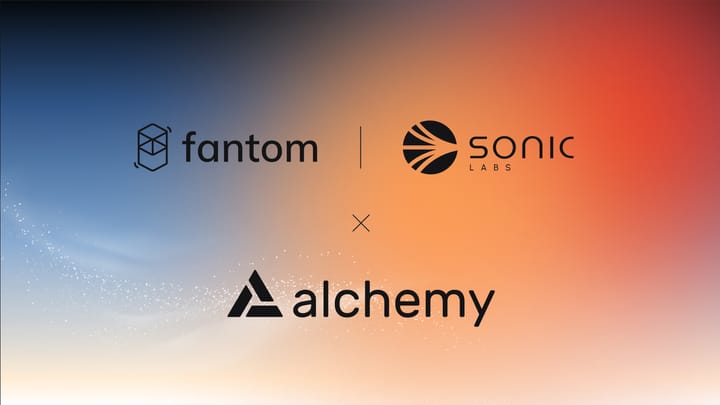Michael Kong Unveils Sonic’s Launch and Beyond (Part 1)

On December 27, 2019, the first version of the current Opera network was released based on concepts that Andre Cronje had carefully studied, including Concurrent Common Knowledge (CCK), Lamport Timestamps, and others. It was an amazing achievement by Andre and the technical team — the first permissionless DAG-based protocol that significantly improved scalability and time to finality. Opera achieved a maximum TPS approaching 200 and time to finality of sub 600ms, far more than Ethereum’s 12 TPS and >60-second finality at the time.
The Opera network grew from zero users to become one of the most widely recognized and utilized networks, with over $10 billion in TVL in 2022. There were growing pains, however. At times of enormous demand, the network became congested and the user experience deteriorated.
In response, the Fantom team has been hard at work for the past two years building our new Sonic technology, the most scalable and secure blockchain technology ever. Sonic’s ability to process 2,000 TPS at sub-second finality represents a huge evolution from Opera’s 200 TPS, and the team is very proud of the product.
With Sonic’s tremendous technical capability, it is time for us to further evolve and innovate. Sonic will be used to create a new best-in-class shared sequencer for L1 and L2 chains, capable of processing over 180 million daily transactions with real, sub-second confirmation times, and serve as the foundation to relaunch Fantom as an entirely new community-centric brand. We are working diligently through an array of details and logistics that we look forward to sharing in the coming weeks and anticipate the new chain will launch in the late summer/early fall of this year.
We plan to put forward a governance proposal suggesting the following:
- Bridging and Security: When Opera first launched, the blockchain landscape was nascent, and interoperability and canonical bridges did not exist. With the blockchain’s evolution, Sonic needs a safe, trust-minimized bridge with native Ethereum access. We developed a Sonic rollup implementation, a first-class citizen in our validator set, to fully decentralize the bridge while using our existing network security plus inheriting Ethereum’s economic security. Sonic’s consensus engine is the sequencing layer, providing fast, secure, and convenient use, while substantially minimizing fees and time to finality.
- Simplified Staking and Liquid Staking Support: We plan to simplify our staking such that APR will no longer depend on lock time but rather have a fixed 14-day unbonding period. This will unleash an over $1 billion opportunity for liquid staking tokens (LSTs), significantly increasing DeFi activity and total value locked (TVL). Several LSTs will be supported, ensuring network security is maintained.
- Grant Programs: We will continue to significantly scale and accelerate our Sonic Labs grant program for developers who build unique and valuable applications and public goods in categories including gaming, DeFi, social media, streaming, and now distributed AI.
- Rewards Campaign: There will be an extensive rewards campaign for both the current Opera network to thank existing users for their support, and for the new chain.
- Superset Introduction: When Sonic goes live, supersets will not yet be enabled; they are scheduled for a soft-fork upgrade toward the end of 2024. This will further drastically increase FVM performance.
- Parallel FVM: Chief Research Officer Professor Bernhard Scholz, an expert in virtual machines, and his team believe that adding parallelization to an upgraded Fantom Virtual Machine (FVM) may significantly boost Sonic’s performance. They will continue to explore parallelization in the next evolution of Sonic.
- ZK Execution Scaling: Andre will continue his research in off-chain execution with on-chain verification. Our initial proof of concepts have already shown some success with implementations using zk-SNARKs, but for now, verification cost is still more expensive than execution cost for simple transactions. This will be further expanded by including pre-compiles in the FVM.
- Canonical Stablecoin: For both the current Opera network and the new Sonic stack, a canonical stablecoin is an essential ingredient for the success of DeFi. We expect this to be in place in the very near future.
We look forward to sharing more details in the coming weeks — including an abundance of news around new partners, VC/angel funding, targeted industries and use cases, and audience engagement programs. We remain very excited, and with the backing and encouragement of the largest token holders, stakers, and projects on Fantom, we’re fully committed to this evolution. Stay tuned.



